Wendigo: Cannibalistic Shapeshifter In Mythology Of Indians Of North America And Canada
A. Sutherland - AncientPages.com - In some myths of the Algonquian tribes of North America, there is a mythical creature or spirit – Wendigo - that takes different forms.
A malevolent, cannibalistic, supernatural being - Wendigo. Credit: Adobe Stock - Daniel
It is a cannibal spirit and a monster that is always hungry. Its scream paralyzes its victims, so they're unable to escape. Wendigo (also known as Windigo, Weendigo, or Windago) is so horrific that many victims die of fright just looking at them.
They are the lucky ones. Those who remain alive are eaten alive, slowly. When Wendigo has nothing left to eat, it starves to death. When it sees something, it wants to own it. No one else can have anything. This illness feeds on a spiritual void.
The Wendigo is a danger that surrounds us. It is not only a creature from myths and legends of the ancients.
"There are two kinds of Windigo, although they are interrelated: spirit Wendigos and human Windigos. The name "Wendigo" derives from an Algonquian root word meaning "evil spirit" and "cannibal." Jesuit missionaries reported sightings of Wendigos in the 1600s. The Wendigo is an incredibly tall, gaunt spirit of harsh winter, frost, and starvation. Wendigos are spirits of ice, snow, and winter. Their hearts are made of ice. Sometimes, they travel in packs. They allegedly like to play catch or kickball with human skulls." 1
The Algonquian Native Americans represent the most extensive and numerous North American groups, with hundreds of tribes speaking several dialects related to the language group, Algonkian. The rich mythology of these people who lived in most of the Canadian territory below the Hudson Bay and between the Atlantic Ocean and the Rocky Mountains - survived many generations, and so did the Wendigo, a monster and bogeyman.
However, his abilities and evil doings vary depending on where the legends were gathered. Indeed, this monster spirit is not within the human, nor does the spirit manipulate the person. Instead, the human takes on the Wendigo's characteristics and behaves exactly like one. It means such a victim prey on other people, consuming them. It is a kind of infection that usually is acquired voluntarily (through rituals) or not.
The Wendigo has the power to possess a human being, and so it can alter its victim to become a cannibal.
Not only cannibalism is associated with the Wendigo but also with murder and voracious greed, and this kind of behavior has always been condemned in these indigenous communities. Some people would even wish to become Wendigos to have the power, perhaps to protect against enemies or punish others.
In some myths and legends of the Algonquin-speaking peoples, those who commit sins such as selfishness, greed, or cannibalism are turned into a Wendigo - as punishment.
Among the peoples of Canada, around Berens Lake, located in Manitoba, along the eastern shore of Lake Winnipeg, the Wendigo is an amphibious being like an alligator with bear's feet or cloven hooves.
The creatures are described as "exceptionally tall but gaunt and emaciated. They usually lack clothing, no matter how far below zero the temperature. The Windigo may be sensed before it is seen or heard: those close often feel chills. Sometimes, their arrival is accompanied by blizzards. Human Windigos do not achieve the immense height of their spirit counterparts." 1
In the beliefs of the Chippewa Indians, also known as the Ojibwe, this evil creature is an ogre focused on children to obtain their compliant behavior. Along with other indigenous tribes such as Eastern Cree, Westmain Swampy Cree, Naskapi, and Innu, the Ojibwe describe the Wendigo as a giant, many times larger than human beings.
In Algonquian folklore, however, the Wendigo is a dangerous, cannibalistic being - the spirit of a lost hunter who now mercilessly preys upon humans. They say that it roams about forests, devouring unfortunate human beings.
The Wendigo is never happy; he is never satisfied with his killings and consuming of the bodies; he is constantly searching for new victims. His hunger is limitless.
Written by A. Sutherland - AncientPages.com Staff Writer
Updated on February 19, 2024
Copyright © AncientPages.com All rights reserved. This material may not be published, broadcast, rewritten or redistributed in whole or part without the express written permission of AncientPages.com
Expand for referencesMore From Ancient Pages
-
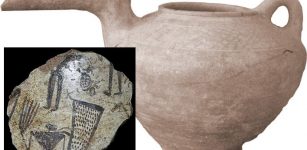 7,000-Year-Old Tepe Ozbaki Mounds Yielded Valuable Relics – But Now The Site Is In Trouble
Archaeology | Nov 25, 2020
7,000-Year-Old Tepe Ozbaki Mounds Yielded Valuable Relics – But Now The Site Is In Trouble
Archaeology | Nov 25, 2020 -
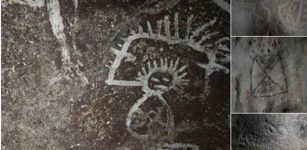 Secrets Of Mona’s Caves: Rock Art Reveals Ancient People Were Ahead Of Their Time Long Before The Arrival Of Columbus
Archaeology | Nov 4, 2017
Secrets Of Mona’s Caves: Rock Art Reveals Ancient People Were Ahead Of Their Time Long Before The Arrival Of Columbus
Archaeology | Nov 4, 2017 -
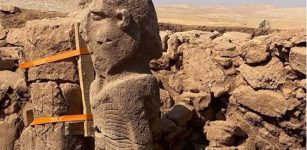 World’s Oldest Human Statue Discovered At Karahan Tepe, Turkey
Archaeology | Oct 30, 2023
World’s Oldest Human Statue Discovered At Karahan Tepe, Turkey
Archaeology | Oct 30, 2023 -
 Notre Dame Is On Fire! Can The Magnificent Cathedral Still Be Saved?
News | Apr 15, 2019
Notre Dame Is On Fire! Can The Magnificent Cathedral Still Be Saved?
News | Apr 15, 2019 -
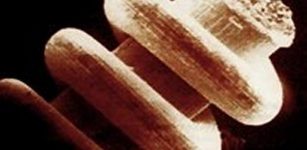 Prehistoric Hi-Tech Nanospirals Barely Visible To The Naked Eye: Still Remain An Unsolved Mystery
Ancient Technology | Mar 4, 2014
Prehistoric Hi-Tech Nanospirals Barely Visible To The Naked Eye: Still Remain An Unsolved Mystery
Ancient Technology | Mar 4, 2014 -
 Rosetta Stone – Artifact That Solves The Riddle Of Egyptian Hieroglyphics
Artifacts | Sep 28, 2015
Rosetta Stone – Artifact That Solves The Riddle Of Egyptian Hieroglyphics
Artifacts | Sep 28, 2015 -
 Fisherman Pulls A Viking Sword From The River Cherwell, Oxford, UK
Archaeology | Mar 6, 2024
Fisherman Pulls A Viking Sword From The River Cherwell, Oxford, UK
Archaeology | Mar 6, 2024 -
 Enigmatic, Grand Neolithic Dolmen Roche-aux-Fées Built By Fairies And Steeped In Aura Of Love And Hope
Featured Stories | Jan 9, 2025
Enigmatic, Grand Neolithic Dolmen Roche-aux-Fées Built By Fairies And Steeped In Aura Of Love And Hope
Featured Stories | Jan 9, 2025 -
 T. Rex’s Direct Ancestor Crossed The Bering Strait From Asia To North America 70 Million Years Ago
Paleontology | May 7, 2025
T. Rex’s Direct Ancestor Crossed The Bering Strait From Asia To North America 70 Million Years Ago
Paleontology | May 7, 2025 -
 Ancient Ruins Of Tiwanaku Palaspata Temple – Discovered In Andes
Archaeology | Jun 27, 2025
Ancient Ruins Of Tiwanaku Palaspata Temple – Discovered In Andes
Archaeology | Jun 27, 2025 -
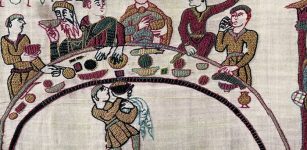 Bayeux Tapestry: Original Location Of Remarkable Romanesque Art – Finally Solved
Archaeology | Oct 26, 2019
Bayeux Tapestry: Original Location Of Remarkable Romanesque Art – Finally Solved
Archaeology | Oct 26, 2019 -
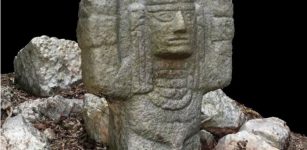 Ancient Atlantean Sculpture Discovered At The Mayan Chichen Itza Archaeological Site
Archaeology | Aug 29, 2023
Ancient Atlantean Sculpture Discovered At The Mayan Chichen Itza Archaeological Site
Archaeology | Aug 29, 2023 -
 Callanish Stone Complex: Sacred Place On The Isle Of Lewis In Scotland
Civilizations | Nov 26, 2018
Callanish Stone Complex: Sacred Place On The Isle Of Lewis In Scotland
Civilizations | Nov 26, 2018 -
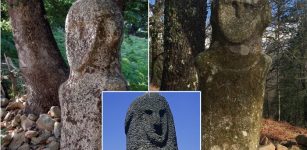 Corsica: ‘The Island Of Statue-Menhirs’ – Where Humans Lived At Least 7,000 BC
Featured Stories | Feb 28, 2024
Corsica: ‘The Island Of Statue-Menhirs’ – Where Humans Lived At Least 7,000 BC
Featured Stories | Feb 28, 2024 -
 How The Horseshoe Became A Symbol Of Good Luck
Ancient Idioms & Superstitions | Jan 28, 2017
How The Horseshoe Became A Symbol Of Good Luck
Ancient Idioms & Superstitions | Jan 28, 2017 -
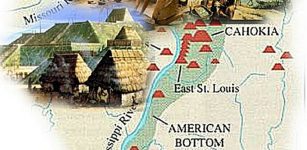 Unsolved Mysteries Of Cahokia – What Really Happened With The Large Metropolis?
Civilizations | Jan 15, 2015
Unsolved Mysteries Of Cahokia – What Really Happened With The Large Metropolis?
Civilizations | Jan 15, 2015 -
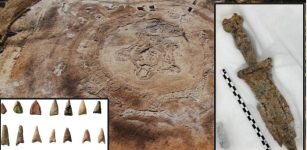 Impressive Copper Age 5,000-Year-Old Fortification With Concentric Walls, Bastions, A Shallow Grave With A Man Face Down And A Dagger – Unearthed
Archaeology | Feb 17, 2025
Impressive Copper Age 5,000-Year-Old Fortification With Concentric Walls, Bastions, A Shallow Grave With A Man Face Down And A Dagger – Unearthed
Archaeology | Feb 17, 2025 -
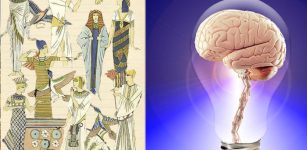 Scientists Investigate – Did The Human Brain Shrink 3,000 Years Ago?
Human Beginnings | Aug 6, 2022
Scientists Investigate – Did The Human Brain Shrink 3,000 Years Ago?
Human Beginnings | Aug 6, 2022 -
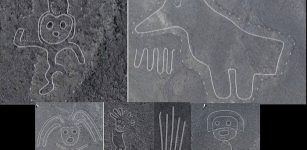 168 Unknown Geoglyphs Discovered In The Nazca Desert By Drones
Archaeology | Dec 19, 2022
168 Unknown Geoglyphs Discovered In The Nazca Desert By Drones
Archaeology | Dec 19, 2022 -
 Probably The Oldest Star Map Discovered In Stone Chamber Of The Kitora Tomb, Asuka Nara, Japan
Ancient History Facts | Jul 19, 2015
Probably The Oldest Star Map Discovered In Stone Chamber Of The Kitora Tomb, Asuka Nara, Japan
Ancient History Facts | Jul 19, 2015

